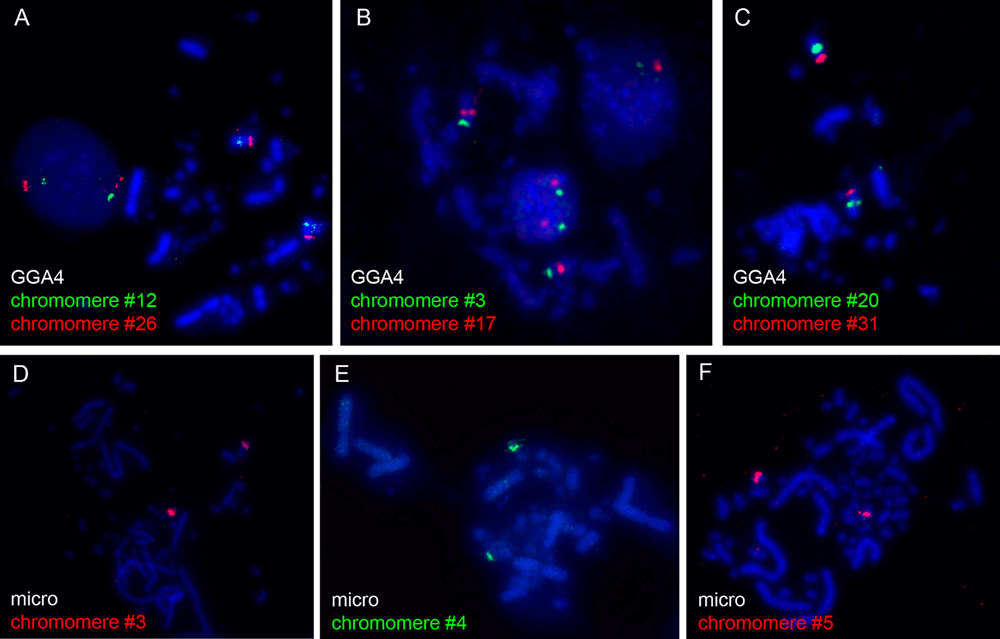Lampbrush Chromosomes
In highly extended chromosomes, such as polytene chromosomes, lampbrush chromosomes (LBCs), and pachytene chromosomes, chromosomes are defined as the universal unit of chromatin packaging. LBCs are highly extended bivalents that function in the oocytes of many animals (except mammals). This is a transient structure that exists during the prolonged diploidy of the first meiotic division of the female gametophyte. LBCs LBCs have emerged as a powerful system for exploring general principles of chromosome organization and function due to their unique chromosomal loop organization and strong transcriptional activity of side loops.
Due to their large size, tissue specificity, and abundance of cytological markers, LBCs serve as suitable models for comprehensive high-resolution cytogenetic and cytological studies. In recent years, many labs have focused on lampbrush chromosomes in birds. This is due to the fact that most avian karyotypes include a small number of relatively large chromosomes and many morphologically indistinguishable tiny chromosomes. The development of avian LBCs has greatly broadened opportunities for comparative genomic studies and cytogenetic analysis of the species.
 Fig 1. Comparison of the usage of amphibian lampbrush chromosome (a,b). (Zlotina A et al., 2017)
Fig 1. Comparison of the usage of amphibian lampbrush chromosome (a,b). (Zlotina A et al., 2017)
Microdissection of Lampbrush Chromosomes
The characteristics of LBCs make them suitable for chromosomal microdissection methods, which are further used to generate specific probes for FISH analysis. Therefore, microdissection is used for the generation of some region-specific probes in FISH analysis protocols of amphibians and avian species. Chromosome microdissection is usually performed in a separate laboratory to minimize contamination. Therefore, it is recommended that researchers set up a dedicated room in the laboratory for chromosome microdissection. Mechanical microdissection-based protocols include mechanical microdissection of LBCs, DOP-PCR-based amplification, and FISH probe preparation. FISH probes generated by microdissection of LBCs are highly specific and can label chromosomal loci as small as individual chromosomes and lateral loops. In this way, researchers can define the genomic location, extent, and sequence content of anatomical regions, allowing specific "chromosomal domains" to be associated with known genes.
 Fig 2. Lampbrush chromosomes (LBC) microdissection and probe customization workflow.
Fig 2. Lampbrush chromosomes (LBC) microdissection and probe customization workflow.
Evolutionary Research by Avian Lampbrush Chromosomes
In some evolutionary research projects, researchers use custom locus-specific locus probes to analyze cytogenetic events of interest. Taking amphibian and avian-derived LBCs models as examples, researchers can conduct studies including chromosome evolution in amphibians, chromosome evolution in birds, and transcriptional mechanisms of light brush chromosomes.
The advantages of LBC research in different fields.
- Combine genome organization research with in vivo gene activity research
- Analyze the co-transcription events that occur on the new transcript
- Study the nuclear domains related to chromosomes
- Used as a tool to study the evolution of chromosomes in amphibians
- Used as a tool to study the evolution of bird chromosomes
 Fig 3. FISH-mapping of microdissected lampbrush chromosome chromomeres on chicken metaphase chromosomes. (Zlotina A, et al. 2020)
Fig 3. FISH-mapping of microdissected lampbrush chromosome chromomeres on chicken metaphase chromosomes. (Zlotina A, et al. 2020)
If you are interested in our FISH service, please contact us for cooperation. We look forward to cooperating with you in the near future.
References
- Zlotina A, Dedukh D, Krasikova A. Amphibian and avian karyotype evolution: Insights from lampbrush chromosome studies[J]. Genes, 2017, 8(11): 311.
- Zlotina A, Maslova A, Pavlova O, et al. New insights into Chromomere organization provided by Lampbrush chromosome microdissection and high-throughput sequencing[J]. Frontiers in genetics, 2020, 11: 57.


 Fig 1. Comparison of the usage of amphibian lampbrush chromosome (a,b). (Zlotina A et al., 2017)
Fig 1. Comparison of the usage of amphibian lampbrush chromosome (a,b). (Zlotina A et al., 2017) Fig 2. Lampbrush chromosomes (LBC) microdissection and probe customization workflow.
Fig 2. Lampbrush chromosomes (LBC) microdissection and probe customization workflow. Fig 3. FISH-mapping of microdissected lampbrush chromosome chromomeres on chicken metaphase chromosomes. (Zlotina A, et al. 2020)
Fig 3. FISH-mapping of microdissected lampbrush chromosome chromomeres on chicken metaphase chromosomes. (Zlotina A, et al. 2020)


